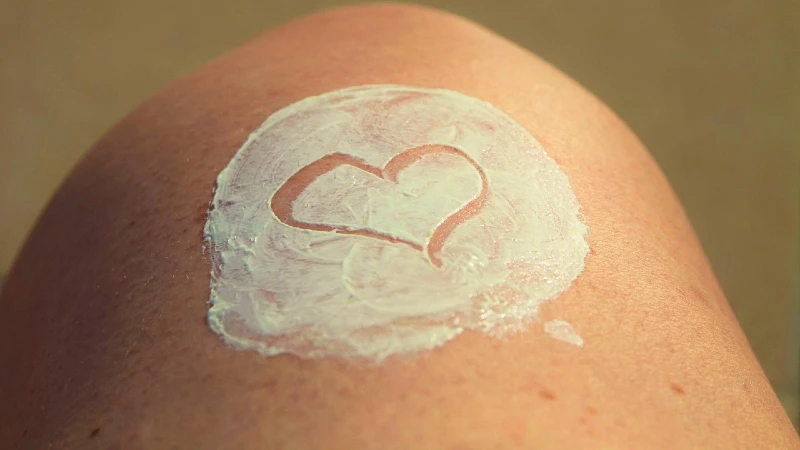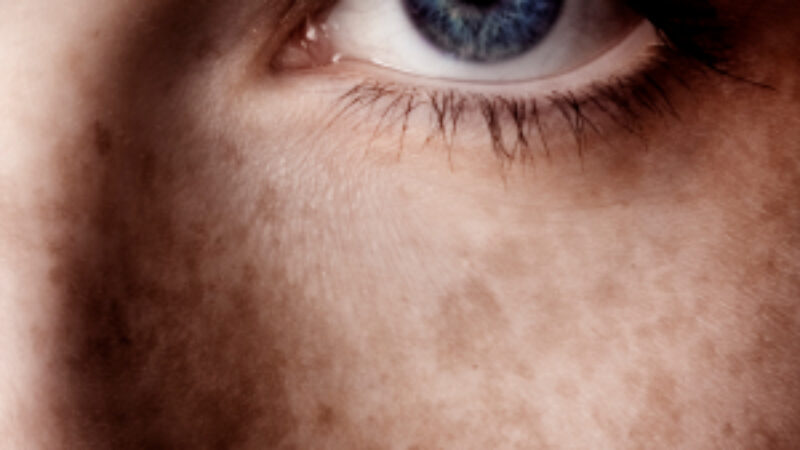Lupus, a chronic autoimmune condition, significantly heightens sensitivity to sunlight, necessitating the careful selection of sunscreen. Protecting the skin from harmful UV rays is crucial for those living with Lupus to manage their symptoms effectively. This guide provides detailed insights into sunscreen choices for Lupus patients, ensuring comprehensive sun protection.
Understanding Lupus and Photosensitivity
Lupus, particularly Systemic Lupus Erythematosus (SLE) and Discoid Lupus Erythematosus (DLE), is characterized by the immune system mistakenly attacking the body’s own tissues, including the skin, joints, and organs. A significant percentage of Lupus patients (40-70%) experience heightened photosensitivity, where exposure to sunlight exacerbates the condition, leading to flare-ups and increased symptoms.
Symptoms of Lupus-Related Photosensitivity
- Rashes: Commonly on the face, neck, and arms.
- Joint Pain: Often aggravated by sun exposure.
- Fatigue: Sunlight can increase fatigue levels.
- Fever: Low-grade fevers may be triggered by UV exposure.
Given these symptoms, the importance of selecting a suitable sunscreen cannot be overstated. Proper sun protection is a key strategy in managing Lupus.
Key Features to Consider When Choosing Sunscreen for Lupus
Selecting the right sunscreen involves more than just picking any product off the shelf. For Lupus patients, the sunscreen must offer comprehensive protection while being gentle on sensitive skin. Below are the critical features to look for:
1. Broad-Spectrum Protection
A broad-spectrum sunscreen shields the skin from both UVA and UVB rays. UVA rays penetrate the skin more deeply and are associated with aging and long-term skin damage, while UVB rays cause sunburn and are linked to skin cancer. For Lupus patients, broad-spectrum protection is essential to prevent flare-ups caused by either type of UV radiation.
2. High SPF (Sun Protection Factor)
The SPF rating of a sunscreen indicates its ability to protect the skin from UVB rays. For individuals with Lupus, a minimum SPF of 30 is recommended, though SPF 50 or higher provides even better protection. High-SPF sunscreens offer more robust defense against the sun’s harmful effects, reducing the likelihood of triggering Lupus symptoms.
3. Hypoallergenic and Fragrance-Free
Lupus patients often have sensitive skin that can react to certain chemicals and fragrances found in standard sunscreens. Hypoallergenic formulas are designed to minimize the risk of allergic reactions, making them a safer choice for those with Lupus. Additionally, choosing fragrance-free options helps avoid irritation caused by added scents.
4. Mineral-Based Formulas
Mineral sunscreens, containing zinc oxide or titanium dioxide, are preferable for Lupus patients. These physical blockers sit on the skin’s surface and reflect UV rays, providing immediate protection without being absorbed into the skin. Mineral-based sunscreens are less likely to cause irritation compared to chemical sunscreens, which can penetrate the skin and potentially trigger sensitivities.
5. Water Resistance
Water-resistant sunscreens are particularly useful for those who sweat easily or spend time in water. Lupus patients should opt for sunscreens with water resistance to ensure continued protection during outdoor activities. However, even with water-resistant formulas, it’s essential to reapply sunscreen every two hours, or more frequently if swimming or sweating.
Additional Sun Protection Strategies for Lupus Patients
While sunscreen is crucial, it should be part of a broader sun protection strategy. Below are additional measures that Lupus patients can take to minimize sun exposure and protect their skin:
1. Wear Protective Clothing
Clothing provides a physical barrier against UV rays. Lupus patients should wear long-sleeved shirts, long pants, and wide-brimmed hats to cover as much skin as possible. UPF (Ultraviolet Protection Factor) clothing is specially designed to block out UV radiation and is an excellent option for those with Lupus.
2. Seek Shade
Avoiding direct sunlight, especially during peak hours between 10 a.m. and 4 p.m., is vital. Whenever possible, seek shade under trees, umbrellas, or canopies. This practice reduces overall UV exposure, lowering the risk of sun-induced Lupus flare-ups.
3. Use Sunglasses
UV rays can also harm the eyes, leading to conditions like cataracts or photokeratitis. Sunglasses that block 100% of both UVA and UVB rays should be worn to protect the eyes and the delicate skin around them.
Applying Sunscreen Correctly
Proper application of sunscreen is as important as choosing the right product. Lupus patients should follow these guidelines to ensure maximum effectiveness:
1. Apply Generously
A common mistake is not using enough sunscreen. For effective coverage, apply at least one ounce (about a shot glass full) of sunscreen to cover the entire body. Use about a teaspoon for the face and neck alone.
2. Reapply Regularly
Sunscreen should be reapplied every two hours, or more frequently if swimming, sweating, or toweling off. Even water-resistant sunscreens lose effectiveness over time, so regular reapplication is necessary.
3. Don’t Forget the Lips
The lips are often overlooked but are just as vulnerable to UV damage. Use a lip balm with SPF 30 or higher to protect this sensitive area.
We stock a wide range of sunscreens suitable for everyone, including individuals with lupus. Check out our top selling line of Anthelios sunscreens and view all sunscreens here.
Conclusion
For individuals living with Lupus, choosing the right sunscreen is not merely a matter of comfort—it’s a critical component of managing their condition. By selecting a sunscreen with broad-spectrum protection, high SPF, and hypoallergenic properties, and by incorporating additional sun protection measures, Lupus patients can significantly reduce the risk of sun-induced flare-ups. Proper application and reapplication of sunscreen, combined with protective clothing and strategic sun avoidance, form a comprehensive defense against the sun’s harmful effects.
xxxxxxxxxxxxxxxxxxxxxxxxxxxxxxxxxxxxxxxxxxxxx
Lupus is an autoimmune condition that may increase sun sensitivity; for this reason, it’s important to know how to choose a sunscreen for lupus.
Lupus (either the more serious Systemic lupus erythematosus – SLE – or Discoid lupus erythematosus, which tends to affect the skin primarily), is a disease in which an individual’s immune system attacks the body’s organs, skin and connective tissue resulting in inflammation and damage. While it most often harms the heart, joints, skin, lungs or nervous system, it can affect any part of the body. Symptoms vary according to the severity of the illness and the affected organs. Women are nine times more likely to have lupus than men.
SLE may occur abruptly or it may occur slowly over months or years. Individuals with SLE complain of joint pain that appears to be arthritic. In children, the joint pain mimics growing pains. Many lupus sufferers experience rashes on their face, neck, upper chest, and/or elbows.
Other common symptoms include:
- Ulcers on mucous membranes
- Swelling of the hands and fingers
- Light sensitivity
- Kidney disorders
- Inflammation of lining of the lungs
- Pericarditis (inflammation of the membrane surrounding the heart)
- Iron deficiency or anemia, and
- High blood pressure. Swelling of lymph nodes is also common, especially in children.
It’s not known what causes lupus, but a range of factors including environmental triggers and genetic susceptibilities are thought to be involved. Lupus cannot be cured so its treatment focuses on preventing and reducing the severity of symptoms with steroids, anti-malarial drugs, anti-inflammatories and some immunosuppressant medications.
Lupus and the Sun
The majority of lupus patients (40 to 70%) will have photosensitivity. Exposure to sunlight can aggravate the condition so minimizing sun exposure is important but complete avoidance isn’t necessarily essential. Here are some things to consider:
- Seek shade or stay out of the sun during its peak hours – between 10 am and 4 pm (especially during the summer) when UVB rays are at their strongest. Keep in mind though, that UVA rays are prevalent at the same intensity all day and all year long.
- Full body protection is essential so start with a wide brimmed hat. Then cover up with clothing. In this case, special sun protective garments with a UPF (Ultraviolet Protection Factor) rating may be warranted. UPF garments are treated with UV inhibitors to enhance sun protection and help keep the wearer comfortable on a hot day.
- Sunscreen is a must. Here are 3 features to look for when choosing a sunscreen for lupus:
a. Hypoallergenic
b. Broad spectrum protection to defend against both UVA and UVB rays
c. SPF of 30 or higher.
Ensure that you apply enough – lay it on thick. Rule of Thumb: 1 tsp (5 ml) for an adult face and neck (1/2 tsp. for a child). Apply sunscreen 20 to 30 minutes before leaving the house and reapply every 2 hours, more often if active or swimming.
We stock a wide range of sunscreens suitable for everyone, including individuals with lupus. Check out our top selling line of Anthelios sunscreens and view all sunscreens here.




